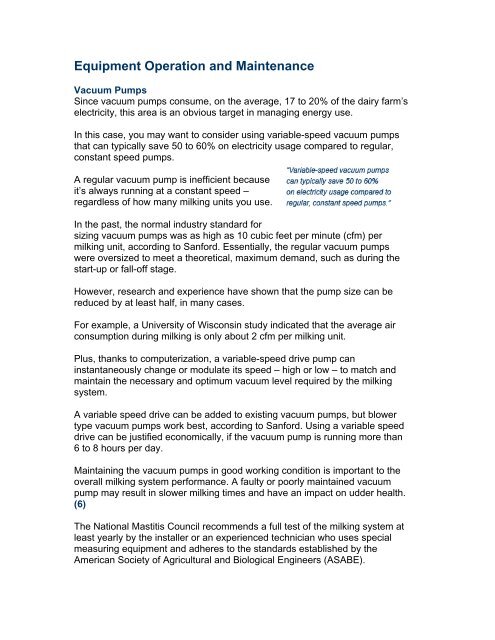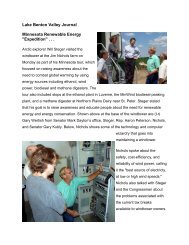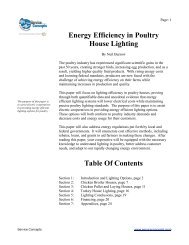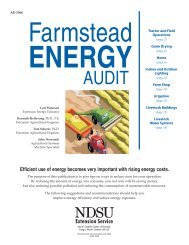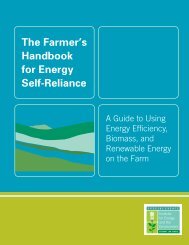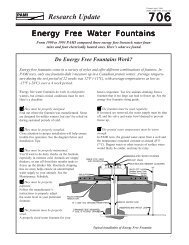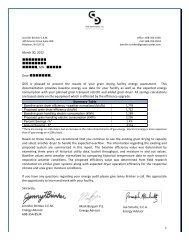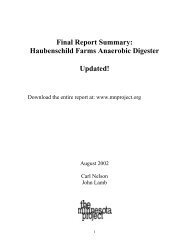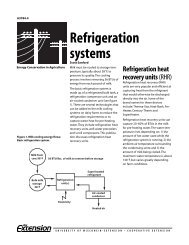Dairy Farm Energy Management Handbook - Wisconsin Department ...
Dairy Farm Energy Management Handbook - Wisconsin Department ...
Dairy Farm Energy Management Handbook - Wisconsin Department ...
You also want an ePaper? Increase the reach of your titles
YUMPU automatically turns print PDFs into web optimized ePapers that Google loves.
Equipment Operation and Maintenance<br />
Vacuum Pumps<br />
Since vacuum pumps consume, on the average, 17 to 20% of the dairy farm’s<br />
electricity, this area is an obvious target in managing energy use.<br />
In this case, you may want to consider using variable-speed vacuum pumps<br />
that can typically save 50 to 60% on electricity usage compared to regular,<br />
constant speed pumps.<br />
A regular vacuum pump is inefficient because<br />
it’s always running at a constant speed –<br />
regardless of how many milking units you use.<br />
In the past, the normal industry standard for<br />
sizing vacuum pumps was as high as 10 cubic feet per minute (cfm) per<br />
milking unit, according to Sanford. Essentially, the regular vacuum pumps<br />
were oversized to meet a theoretical, maximum demand, such as during the<br />
start-up or fall-off stage.<br />
However, research and experience have shown that the pump size can be<br />
reduced by at least half, in many cases.<br />
For example, a University of <strong>Wisconsin</strong> study indicated that the average air<br />
consumption during milking is only about 2 cfm per milking unit.<br />
Plus, thanks to computerization, a variable-speed drive pump can<br />
instantaneously change or modulate its speed – high or low – to match and<br />
maintain the necessary and optimum vacuum level required by the milking<br />
system.<br />
A variable speed drive can be added to existing vacuum pumps, but blower<br />
type vacuum pumps work best, according to Sanford. Using a variable speed<br />
drive can be justified economically, if the vacuum pump is running more than<br />
6 to 8 hours per day.<br />
Maintaining the vacuum pumps in good working condition is important to the<br />
overall milking system performance. A faulty or poorly maintained vacuum<br />
pump may result in slower milking times and have an impact on udder health.<br />
(6)<br />
The National Mastitis Council recommends a full test of the milking system at<br />
least yearly by the installer or an experienced technician who uses special<br />
measuring equipment and adheres to the standards established by the<br />
American Society of Agricultural and Biological Engineers (ASABE).


